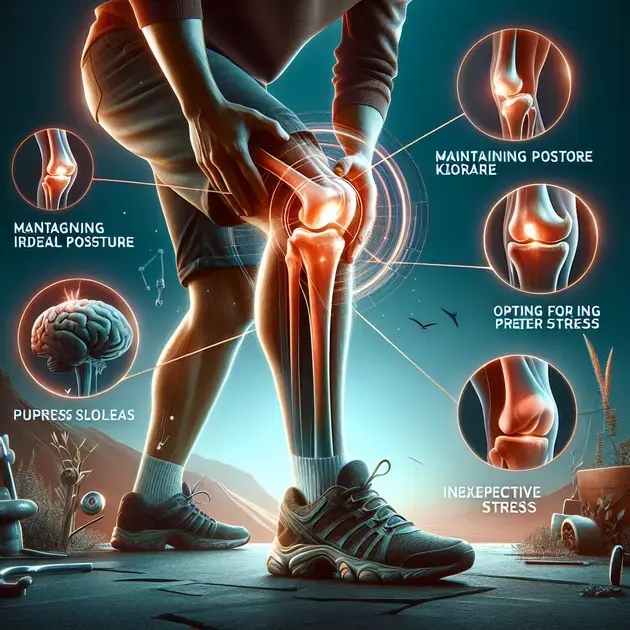When it comes to managing your sugar levels, staying informed and proactive is key. This comprehensive guide is designed to help you take control of your blood sugar levels and maintain a healthy lifestyle. With the right knowledge and strategies, you can effectively manage your sugar levels and reduce the risks associated with high or low blood sugar.
In today’s fast-paced world, where convenience often trumps nutrition, understanding how different foods and lifestyle choices impact your blood sugar is more important than ever. This guide will provide you with practical tips, meal planning advice, and insights on how to make the best choices for managing your sugar levels effectively.

Easy Ways to Monitor Your Blood Sugar
Monitoring your blood sugar levels is essential for managing diabetes effectively. One easy way to do this is by using a blood glucose monitor. These devices are portable and user-friendly, allowing you to check your blood sugar levels at home or on the go. Popular blood glucose monitors include Accu-Chek Guide and OneTouch Verio. You can purchase these monitors at pharmacies or medical supply stores, and they come with instructions on how to use them accurately.
Another easy way to monitor your blood sugar is by utilizing mobile apps designed for diabetes management. Apps like MySugr and Glucose Buddy allow you to log your blood sugar readings, track your meals and physical activity, and set reminders for medication. These apps provide valuable insights into your blood sugar patterns and can help you make informed decisions about your diabetes care.
Regular visits to your healthcare provider are also crucial for monitoring your blood sugar levels. During these visits, your doctor can perform blood tests to assess your average blood sugar levels over time. They can also adjust your treatment plan as needed to keep your blood sugar levels in check.
In addition to these methods, maintaining a healthy lifestyle with a balanced diet and regular exercise can help you monitor your blood sugar levels effectively. By eating nutritious foods, staying active, and managing stress levels, you can contribute to stable blood sugar levels and overall well-being.
Remember to keep track of your blood sugar readings regularly and discuss any concerns or changes with your healthcare team. Monitoring your blood sugar is a key aspect of diabetes management, and by incorporating these easy ways into your routine, you can take control of your health.
Creating a Balanced Meal Plan for Blood Sugar Control
Designing a balanced meal plan is essential for controlling blood sugar levels and overall health. Start by incorporating a variety of nutrient-dense foods into your diet, such as fruits, vegetables, whole grains, lean proteins, and healthy fats. Websites like ChooseMyPlate.gov provide guidelines on building a healthy plate and meal planning tips.
When planning your meals, aim for a balance of carbohydrates, protein, and fats to help manage your blood sugar levels. Consider using meal planning apps like MyFitnessPal or Carb Manager to track your food intake and make sure you’re meeting your nutritional needs. These apps offer databases of foods and their nutritional content, making it easier to plan meals that align with your blood sugar goals.
It’s also important to pay attention to portion sizes and meal timings when creating a balanced meal plan. Eating smaller, frequent meals throughout the day can help prevent spikes and crashes in blood sugar levels. Be mindful of how different foods affect your blood sugar and make adjustments as needed.
Incorporating fiber-rich foods into your meals can also aid in blood sugar control by slowing down the absorption of sugar into the bloodstream. Foods like beans, lentils, and whole grains are excellent sources of fiber and can help stabilize your blood sugar levels. Experiment with different recipes and ingredients to keep your meals interesting and nutritious.
Consulting with a registered dietitian or healthcare provider can provide personalized guidance on creating a meal plan that suits your individual needs and preferences. By following a balanced meal plan consistently, you can support your blood sugar control efforts and promote overall health and well-being.
Incorporating Exercise into Your Sugar Level Management Strategy
Exercise plays a vital role in managing blood sugar levels and improving insulin sensitivity. To incorporate exercise into your sugar level management strategy, start by choosing activities that you enjoy and can incorporate into your routine. Websites like MyFitnessPal and Fitbit offer workout tracking features and exercise ideas to help you stay active.
Aim for a mix of aerobic exercises, such as walking, cycling, or swimming, and strength training activities like weightlifting or bodyweight exercises. Regular physical activity can help lower blood sugar levels, reduce the risk of complications related to diabetes, and improve your overall fitness and well-being.
Set realistic and achievable fitness goals to stay motivated and track your progress over time. Whether you prefer group classes, outdoor activities, or home workouts, find what works best for you and fits into your schedule. Use fitness apps like Nike Training Club or Strava to access guided workouts and connect with a community of like-minded individuals.
Remember to monitor your blood sugar levels before, during, and after exercise to understand how different activities affect your body. Stay hydrated, eat a balanced snack if needed, and be prepared to adjust your workout intensity or duration based on your blood sugar responses. Consistency is key when it comes to incorporating exercise into your sugar level management strategy.
Consult with your healthcare provider before starting a new exercise routine, especially if you have any underlying health conditions. They can provide guidance on the type and intensity of exercises that are safe and beneficial for you. By making exercise a priority in your daily life, you can support your sugar level management efforts and enjoy the numerous health benefits that physical activity offers.

Understanding the Role of Sleep in Regulating Blood Sugar Levels
Getting an adequate amount of quality sleep is crucial for maintaining balanced blood sugar levels. When we sleep, our bodies go through various processes that help regulate hormones, including insulin, which plays a key role in blood sugar control. Lack of sleep can disrupt these processes, leading to insulin resistance and higher blood sugar levels. Studies have shown that people who consistently get less sleep are at a higher risk of developing type 2 diabetes.
To improve sleep quality and regulate blood sugar levels, it is important to establish a bedtime routine that promotes relaxation and restful sleep. This may include avoiding electronic devices before bed, creating a comfortable sleep environment, and practicing relaxation techniques such as deep breathing or meditation. Additionally, maintaining a consistent sleep schedule can help regulate the body’s internal clock and improve overall sleep quality.
Incorporating regular physical activity into your routine can also have a positive impact on both sleep quality and blood sugar levels. Exercise not only helps reduce stress, but it can also improve the body’s sensitivity to insulin, allowing for better regulation of blood sugar. By combining healthy sleep habits with regular exercise, you can support overall blood sugar management and promote better health outcomes.
Overall, prioritizing sleep as part of your overall health regimen is essential for regulating blood sugar levels and reducing the risk of developing complications related to uncontrolled blood sugar. By making small changes to improve sleep quality and quantity, you can positively impact your overall health and well-being.
Stress Management Techniques for Better Blood Sugar Control
Chronic stress can have a significant impact on blood sugar levels, as it triggers the release of hormones like cortisol and adrenaline, which can lead to spikes in blood sugar. Finding effective stress management techniques is crucial for maintaining stable blood sugar levels and overall health.
One effective technique for managing stress and blood sugar levels is practicing mindfulness and relaxation exercises. Techniques such as deep breathing, progressive muscle relaxation, and meditation can help lower stress levels and promote a sense of calm, which can in turn support better blood sugar control.
Incorporating regular physical activity into your routine can also be an effective way to reduce stress and improve blood sugar management. Exercise releases endorphins, which are natural stress fighters, and can help regulate blood sugar levels by increasing insulin sensitivity. Whether it’s a brisk walk, yoga, or strength training, finding activities that you enjoy can make managing stress and blood sugar levels more sustainable.
Another important aspect of stress management for better blood sugar control is ensuring adequate rest and relaxation. Getting enough sleep and prioritizing self-care activities can help reduce stress levels and support overall health. Additionally, building a strong support network and seeking professional help when needed can provide additional resources for managing stress and blood sugar levels effectively.
Exploring Natural Supplements for Blood Sugar Regulation
Natural supplements can be a beneficial addition to a balanced diet and healthy lifestyle for supporting blood sugar regulation. Several supplements have been studied for their potential effects on blood sugar levels, offering alternative options for individuals looking to optimize their health.
One popular natural supplement for blood sugar regulation is chromium, which plays a key role in enhancing the action of insulin in the body. Chromium supplements have been shown to improve glucose metabolism and insulin sensitivity, making them a potential option for individuals with insulin resistance or prediabetes.
Another natural supplement worth exploring is berberine, a compound extracted from various plants that has been shown to help regulate blood sugar levels by activating an enzyme involved in glucose metabolism. Berberine supplements have been studied for their potential benefits in managing blood sugar and may offer a natural alternative to traditional diabetes medications.
In addition to chromium and berberine, other natural supplements like cinnamon, alpha-lipoic acid, and magnesium have also shown promise in supporting blood sugar regulation. However, it is important to consult with a healthcare provider before starting any new supplement regimen, as individual needs and potential interactions with medications should be taken into consideration.
Conclusion
Understanding the critical role of sleep in regulating blood sugar levels is paramount for overall health and well-being. Quality sleep is essential for maintaining balanced blood sugar levels, as it allows the body to undergo processes that regulate hormones like insulin, crucial for blood sugar control. Research has linked insufficient sleep to increased insulin resistance and higher blood sugar levels, highlighting the importance of prioritizing adequate and restful sleep in diabetes prevention.
The implementation of stress management techniques is vital for better blood sugar control. Chronic stress can lead to hormonal imbalances that spike blood sugar levels, emphasizing the need for effective stress-relieving practices. Mindfulness, relaxation exercises, and physical activities such as yoga or strength training can lower stress levels, promoting better blood sugar regulation and overall health.
Exploring natural supplements like chromium, berberine, cinnamon, alpha-lipoic acid, and magnesium can offer additional support for blood sugar regulation in conjunction with a healthy diet and lifestyle. These supplements have shown potential in enhancing glucose metabolism, improving insulin sensitivity, and managing blood sugar levels effectively. However, it’s crucial to consult with a healthcare provider before incorporating any new supplement regimen to ensure compatibility with individual needs and existing medications.

















